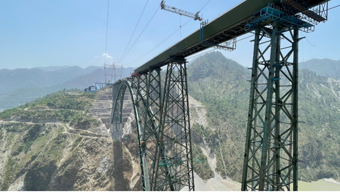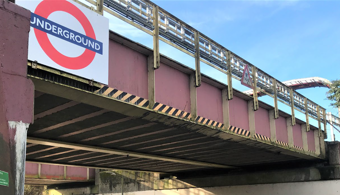
JF SME Testing is the leading independent provider for foundation testing services, offering a complete range of testing methods.
Our highly skilled testing team can provide a tailored foundation service, with a broad range of loading capacities and non-destructive methods, using the latest innovative James Fisher products.
We can provide practical advice on the best testing methods for your project needs and our scope of experience and resources enables us to deliver a rapid response service for quick on-site evaluations. Testing methods include pile integrity, sonic logging, load testing and seismic testing.
Testing methods include:
Using our own specially developed equipment, JF SME Testing provides a below ground corrosion assessment service as an alternative method to traditional excavation techniques.
Understanding the performance of metals when buried in soils and the rate of corrosion enables structure service life to be determined with reasonable accuracy.
Traditional excavation methods can be a very costly and time consuming assessment of underground corrosion. JF SME Testing's alternative technique, using our own specially developed equipment provides a more efficient and less intrusive way to evaluate corrosion rates.
Below ground corrosion assessment methodology
Corrosion of a steel element embedded in the ground is a chemical reaction, whereby iron, oxygen and water react. Using our BGCMap system, the below ground corrosion assessment operates by applying a current and recording the change in electric potential occurring between the systems half-cell and the corroding sample.
An electrode spike is driven into the ground within 1 meter of the component, to the depth of at least 200 millimetres. The BGCMap unit is connected to the component and the electrode using heavy duty steel clips. Any surface coating at the point of contact is removed.
The copper / copper sulphate half-cell is then inserted firmly into the ground, in a small hole excavated alongside the test component. The test is automatically conducted by the BGCMap, which applies the current and records the voltage. The GPS coordinates, date and time of the test are all also recorded.
BDSLT provides high resolution results for design engineers to confidently optimise pile design, based on achieved test results. In comparison to traditional methods of load testing, BDSLT is safer, faster and provides more accurate data. It is often the only solution for restricted access or low headroom situations where installation of anchor piles or other reaction systems are not possible.
Using a combination of hydraulic, high-capacity bi-directional jacks to deliver the required test load, BDSLT provides separate measurements of a pile’s end-bearing and skin friction along the pile’s length. JF SME Testing has utilised BDSLT for over 15 years, having successfully completed over 2,000 tests worldwide. During this time, JF SME Testing has refined the equipment used and techniques deployed on-site to ensure reliable and accurate results.
JF SME Testing's highly skilled testing team can provide a tailored service, using the latest innovative James Fisher products. JF SME Testing's global presence and depth of experience enables it to deliver a rapid response service for quick on-site evaluations and remote monitoring services.
Find out more about our bi-directional static load testing.
Cross hole sonic logging is a foundation testing method employed by JF SME Testing to verify the structural integrity of drilled concrete piles and shafts.
With decades of experience, JFST uses the latest SCXT3000 sonic logging system to test, view and store critical data on the structural soundness of the concrete.
JF SME Testing offers a high end analysis service which includes 2D and 3D tomography reporting for fast visualisation of foundation defects.
Cross hole sonic logging methodology
Cross hole sonic logging uses ultra-sonic transducers to measure the transit time of sound in concrete. The test is carried out in foundations where steel tubes have been installed during construction, normally to full depth.
Probes are lowered into the tubes and cables are then raised using the systems electronic logging winch. As the winch wheel turns, the emitter sends an ultra-sonic signal which travels between transducers in selected tubes to a receiver.
The signal is captured and stored as a time / amplitude trace for every 1 centimetre of the pile length. Traces are combined into one sonic profile or waterfall plot, and the first arrival time (FAT) can be used to determine the ultrasonic pulse velocity if the distance between the tubes is also measured.
Dynamic pile testing by JF SME Testing offers a fast and cost-effective method of determining the performance of pile foundations.
Using the SIMBAT technique, testing includes a number of features that enable data validation, including the specially designed optical theodolite.
The prime advantage of dynamic load testing is the speed of testing and its low cost. Typically up to 10 piles can be tested per day with preliminary results available immediately.
Dynamic pile testing methodology
JF SME Testing has been offering dynamic pile testing using the SIMBAT technique for many years. The technique is a dynamic pile test that allows the prediction of static load settlement behaviour of bored, cast-in-place and pre-cast driven piles.
The method is based on the reproduction of waves in long elastic cylinders. When the pile top is struck with a falling weight, the pile section is deformed (enlarged) and this travels down the pile to the toe where it is reflected back up. In a free, un-damped pile the particle velocity of the return wave would be identical to the original wave.
When a pile is surrounded and restrained by soil, part of the wave is reflected back up at every external restraint. The remainder of the wave continues downwards, so that at any one time there are both upward and downward forces and velocities in the pile.
The SIMBAT technique is able to separate these upward and downward forces to calculate the dynamic soil reaction, by measuring the difference between the upward force in a free pile and the real upward force measured.
JF SME Testing upgrading SIMBAT dynamic load testing capabilities
JF SME Testing's SIMBAT dynamic testing capabilities will be given a boost with the deployment of a new purpose-made 400Kg drop weight system.
The rig will be able to deliver a dynamic load of up to 600kN in suitable ground conditions. The system will be deployed from a van and comprise of a tracked unit with a self-contained system for lifting and dropping the weights under free-fall conditions. The tracked unit will be able to operate through doorways enabling tests to be carried out on restrictive access sites.
This system will reduce the degree of manual handling required by test operatives and increases the capacity of piles that can be dynamically tested from a van deployed team, complementing our existing trailer-mounted 1-tonne drop weight system.
Parallel seismic testing by JF SME Testing is regarded as the only reliable method of checking the durability of foundations beneath existing structures.
Occasionally doubts about the integrity and length of concrete and sheet piling, only arises after the structure is complete and pile heads are no longer accessible for testing.
The parallel seismic test has been developed for testing in these situations and is often used to determine the embedded depth of sheet piling, confirmation of pile depth underneath caps and structures, as well as checking the depth of masonry and footings.
Parallel seismic testing methodology
The parallel seismic test works by measuring the time taken for a signal to travel from the top of the pile, to a transducer inside the access tube alongside the pile.
The system hydrophone is lowered down the tube and every 500 millimetres the side of the pile or structure is struck, and the resultant signal from the moment of impact is recorded.
As the hydrophone descends, the rate of increase in signal arrival time will increase. The depth of the foundation is determined by the depth the rate of first arrival changes.
JFST is a specialist provider of pile integrity testing techniques to assess the condition of concrete pile foundations.
Using the latest portable system, the TDR2, we are able to conduct advanced interpretation of data measuring pile length, pile head stiffness and pile shaft mobility.
The specially developed equipment is lightweight, portable and produces rapid results. Analysis can be carried out instantly on-site, to confirm the length of the foundation and depth of any existing defects.
The TDR system features powerful software analysis program to enable a more detailed analysis of changes in pile section and the influence of soil. In normal conditions we can easily test up to 60 piles per day, increasing to 200 where access is particularly good.
Pile integrity testing methodology
The Transient Dynamic Response (TDR) test is based on measuring the frequency and amplitude response of a pile, known as impulse. After ensuring that the concrete in the pile head is visually free of contaminants, a geophone sensor is placed in contact with the pile head, which is struck axially using the force response hammer.
The response of both transducers is measured simultaneously and these signals, velocity and force, are processed and displayed on the TDR test unit.
JF SME Testing provides a static load testing service to determine the performance of a pile when subjected to a given load.
Static load tests can be used to determine the settlement that can occur at working load, or a multiple of it, and can also be used to verify the ultimate bearing capacity of a pile.
There a number of different methods of static load tests:
- Maintained load test - each increment of load is held constant for a specified period of time or until the rate of settlement falls below a specified value.
- Constant rate of penetration (CPR) test - the load is applied to the pile in order to maintain the rate of penetration at a constant speed. This method is usually conducted for determining the ultimate bearing capacity of a pile.
- Tension test - similar to maintained load test, except the purpose of this method is to determine how the pile will perform under a tensile load.
- Zone testing - this method is usually conducted after ground remediation over a large surface area.
Static load testing methodology
Loading can be applied in one of two ways; using a jack which reacts against a kentledge heavier than the required test load or using a jack which reacts against beams held down by tension piles acting as anchors.
Pile settlement is recorded using dial gauges or electrical displacement transducers. The applied load is monitored using calibrated load cells, and on up to date systems can be controlled automatically using a portable computer and a compressed air pump.

If you are making an enquiry about a product or service, please use our sales enquiry form.
Read our latest news
 Read article
Read article
Sale of Mimic and Strainstall UK
Read article
JF SME Testing provides structural health monitoring system for the world’s tallest railway bridge
Read article
JF SME Testing secures Places of Westminster instrumentation and monitoring contract
Read article
James Fisher combines its asset monitoring capabilities under the new brand of JF SME Testing
Read article
All Monitoring Data in One Platform
Read article
Detection of bridge impact
Read article
Monitoring Railway for Washout
Read article



